About the challenge
Our journey began with a profound exploration of shared mobility and the shifting dynamics of car sales. Through four immersive events, we engaged with Audi professionals, engineers, sales representatives, and dealers. These interactions provided us with a fresh perspective on the fiercely competitive ride-sharing market and cutting-edge technology implementations in mobility services.


Team
My college friends: Alex B, Josh V
Role
Visual designer
Tools
Generative brainstorming, stakeholder interviews, paper prototyping
Duration
4 weeks
Market research
Mobility as a service is rather wide topic that was covers many areas of user experience. Though talking with stakeholders as well as researching growing trends our team was interested in passenger experience as if you were in Uber or Lyft.
Existing myAudi App Examination
Our investigation extended to the existing myAudi app, which catered primarily to car owners and did not provide passengers with access to the premium features within the vehicle.


User perspective
When a passenger steps into a car, they seek a tailored and immersive experience. Imagine getting into an Uber and having access to features like a seat massage. However, accessing these premium features was cumbersome, and most passengers remained oblivious to their existence without guidance from the driver.
Problem statement
Understanding passengers
We defined four primary categories of features for E-tron car users:
audio
lighting
seat control
climate
Areas of focus
While the passenger experience was at the forefront, we were aware of the fact that the driver plays a pivotal role in managing the vehicle while ensuring safety. Later aim was to simplify the ride-sharing process without interfering with the driver's responsibilities.
Security
Information confidentiality and travellers’ safety is a priority.
Control
Drivers need a way to control their vehicle at all times.
Communication
Safer driving experiences involves proper passenger communication and assistance.
Designing for web
Our conversations with Audi engineers revealed that software solutions requiring access to car functionalities, such as remote start and trunk opening, must undergo rigorous security checks to ensure driver safety. Software upgrades were constrained due to high deployment costs.
Prioritizing driver control
Recognizing that a single car may host up to six passengers, we designed the system to allow the driver to set tolerances for specific seats. This prevented feature request conflicts between multiple paired devices, ensuring that the driver maintains control over the car.
QR code connects user to our solution.
The passengers phone establishes a connection with the driver’s phone.
The driver’s phone receives and approves requests from passengers’ phones.
Car dashboard accomodates and adjusts interior setings, such as audio volume and seating positions.
Low-fidelity prototyping
To validate the visual hierarchy and the overall user experience, we used the Audi UI design system and created low-fidelity wireframes.
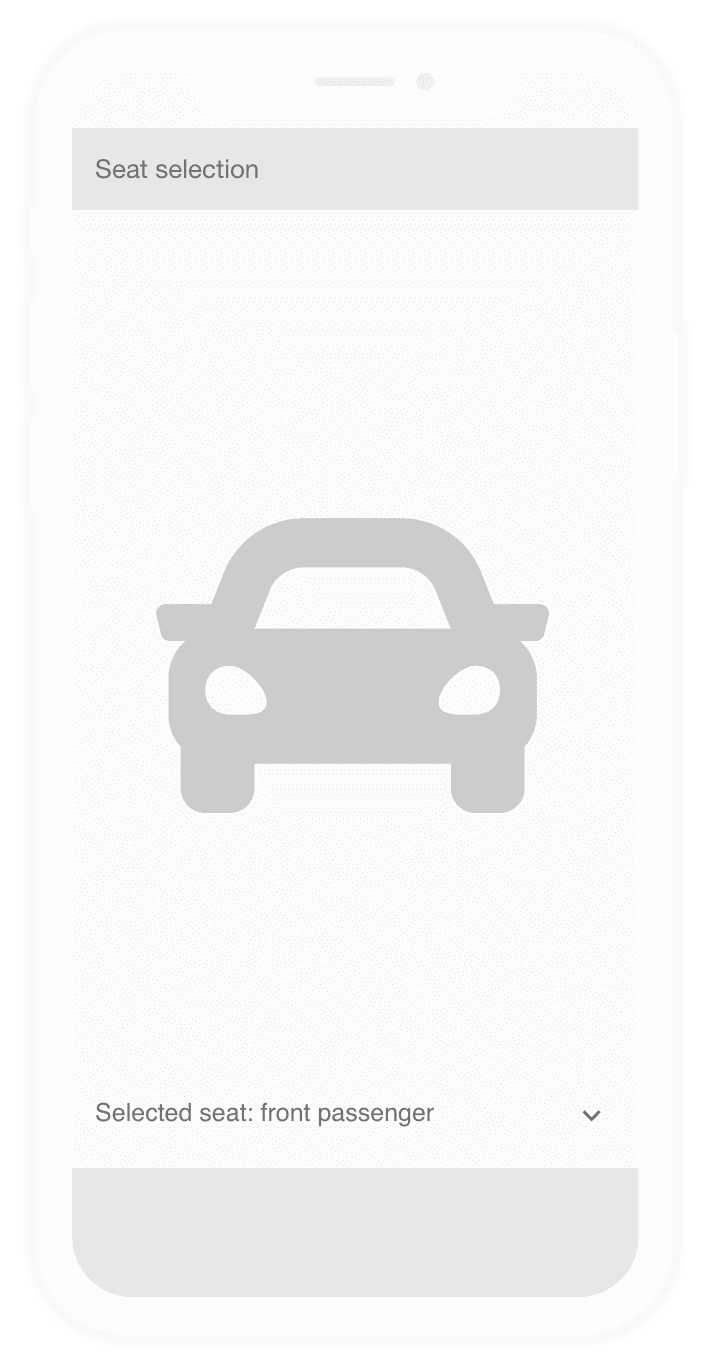
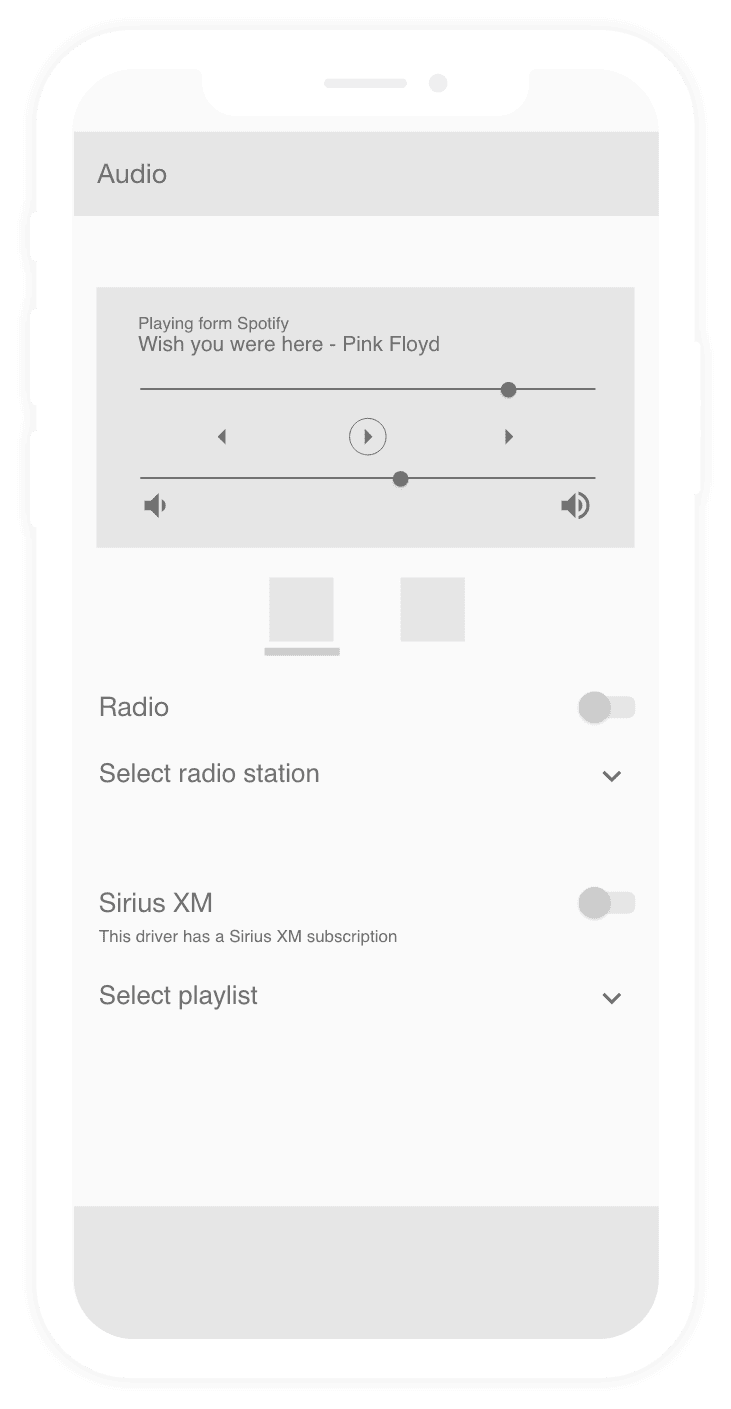
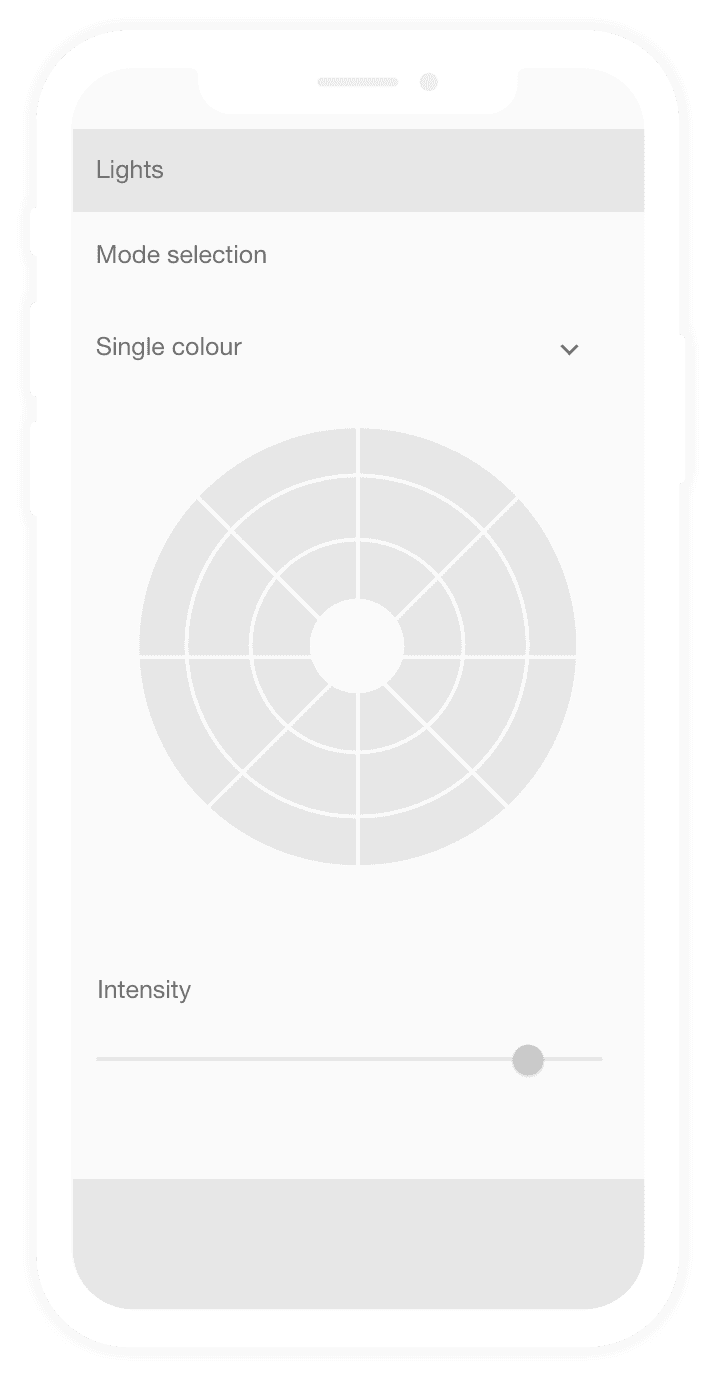
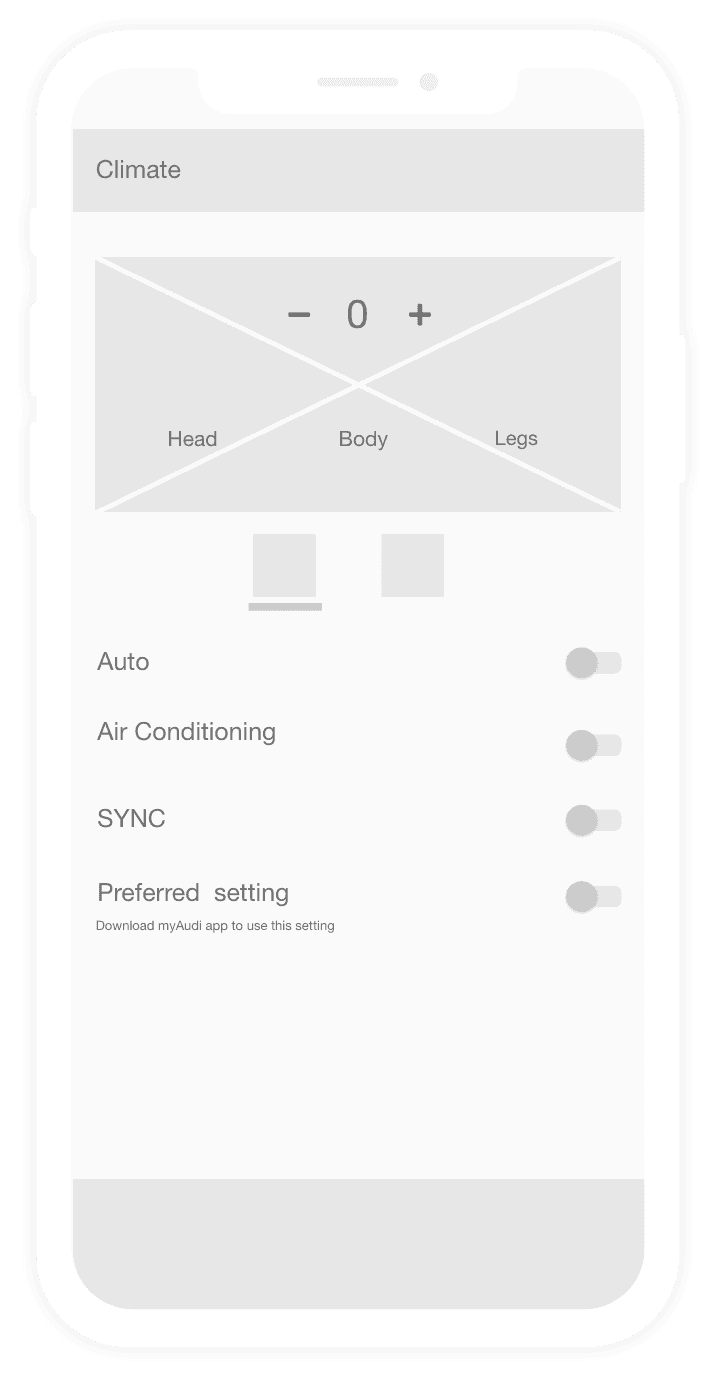
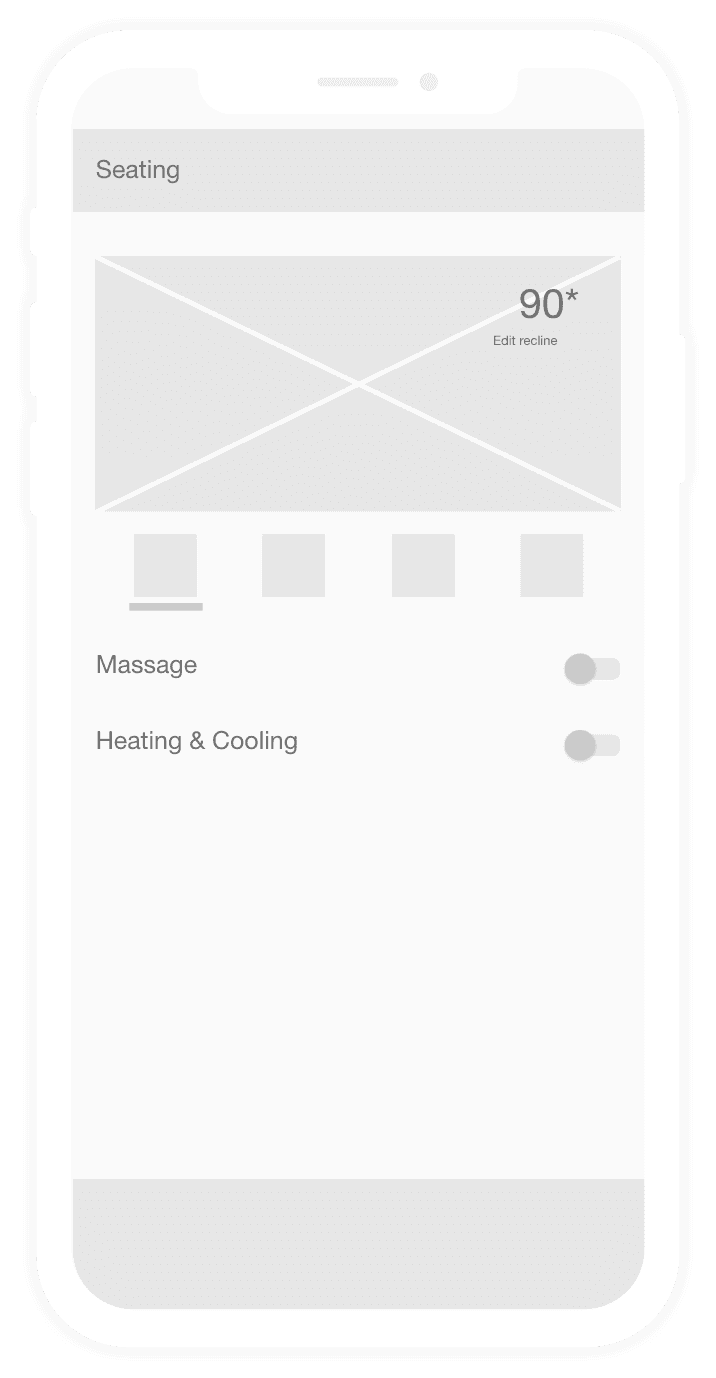

User flow
Entire user flow captured the following key steps:
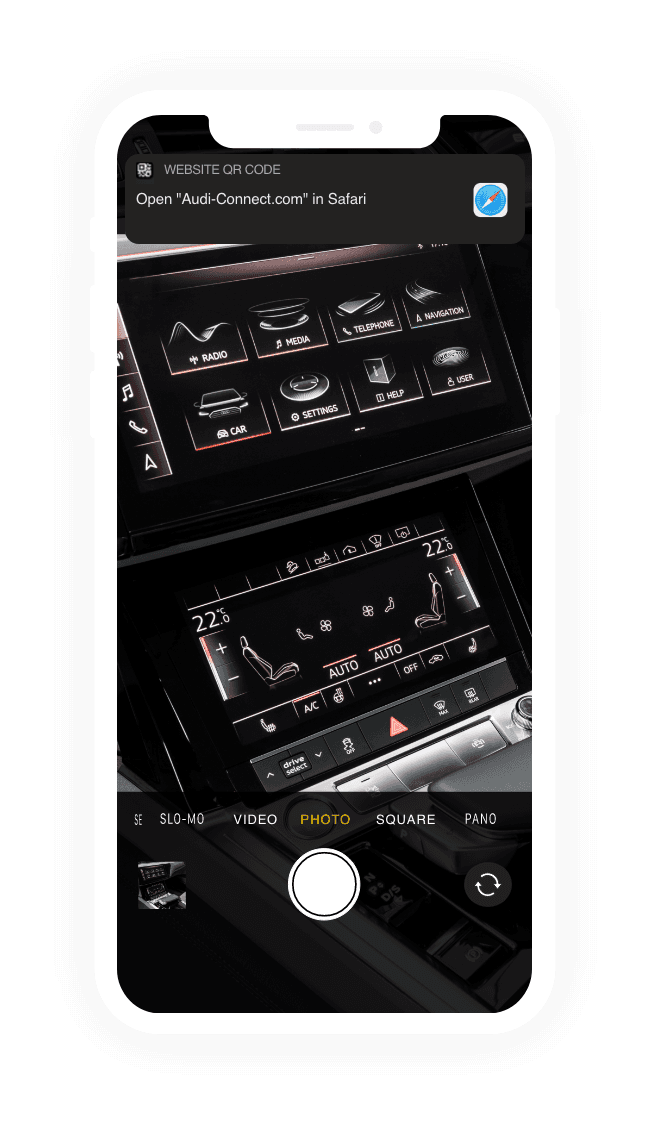

Pairing
Connecting via a QR code window sticker or other methods.
1. Pairing
Connecting via a QR code window sticker or other methods.

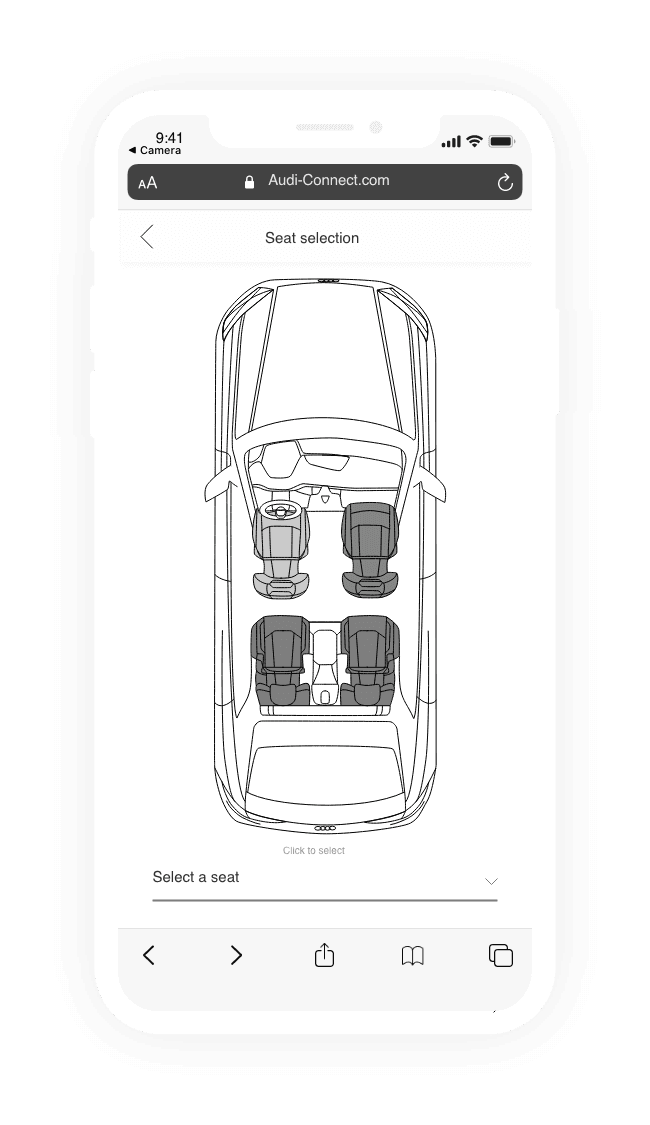
2. Seat selection
Allowing passengers to customize features for their chosen seat.


3. Logging in
Confirming the connection to the system.

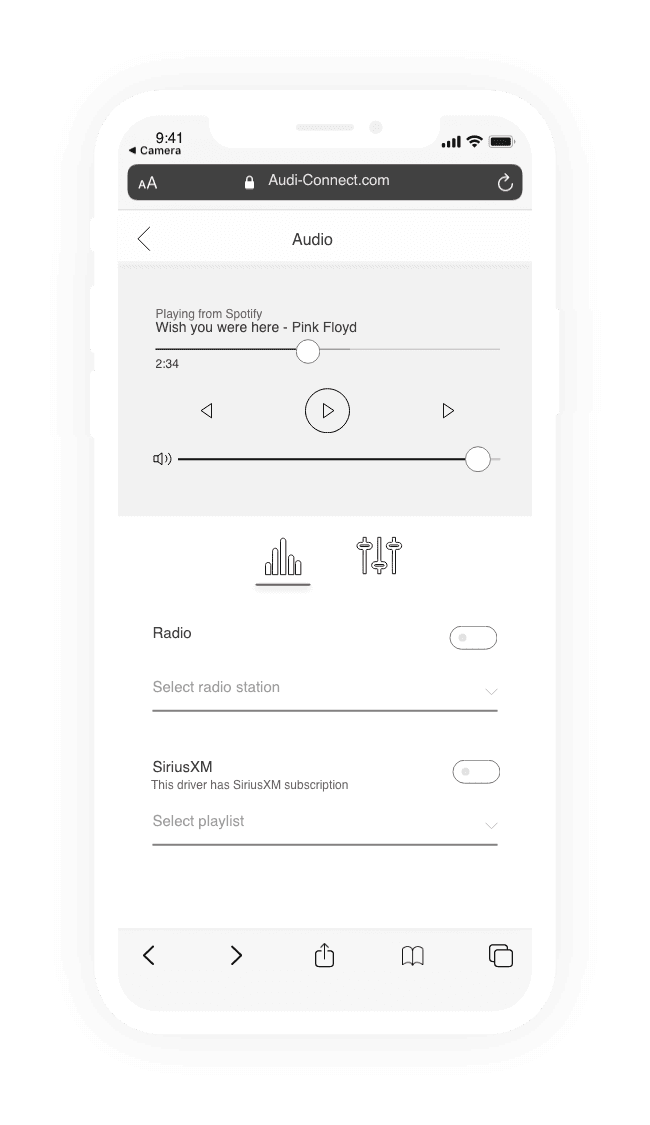
Accessing features
Granting access to interior settings based on driver-defined tolerances.

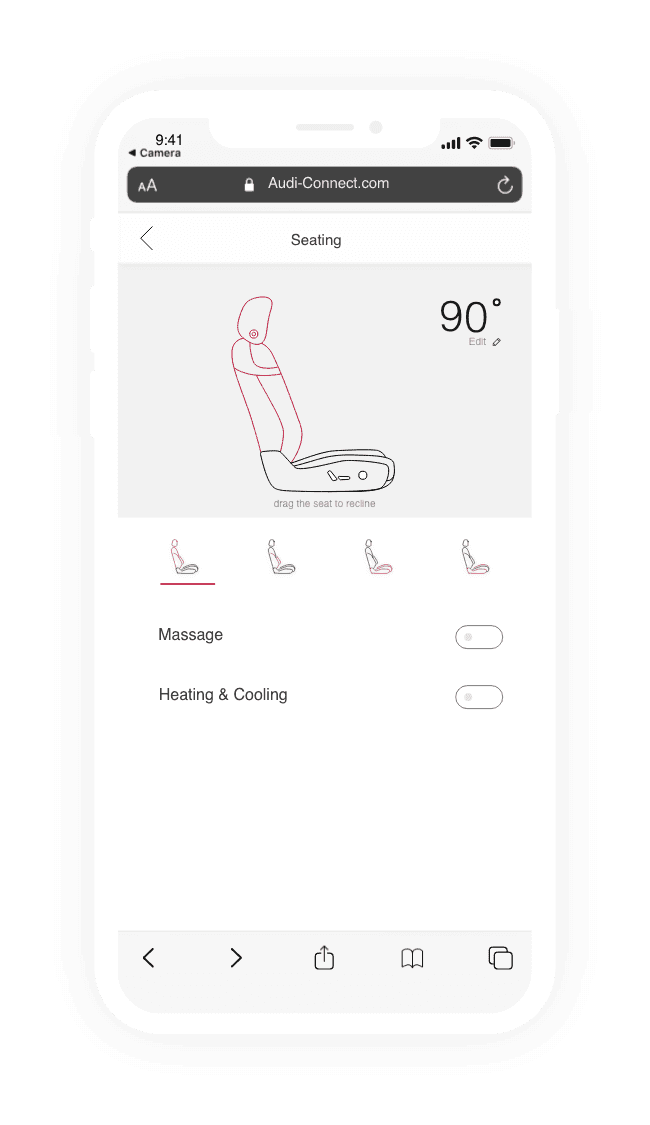
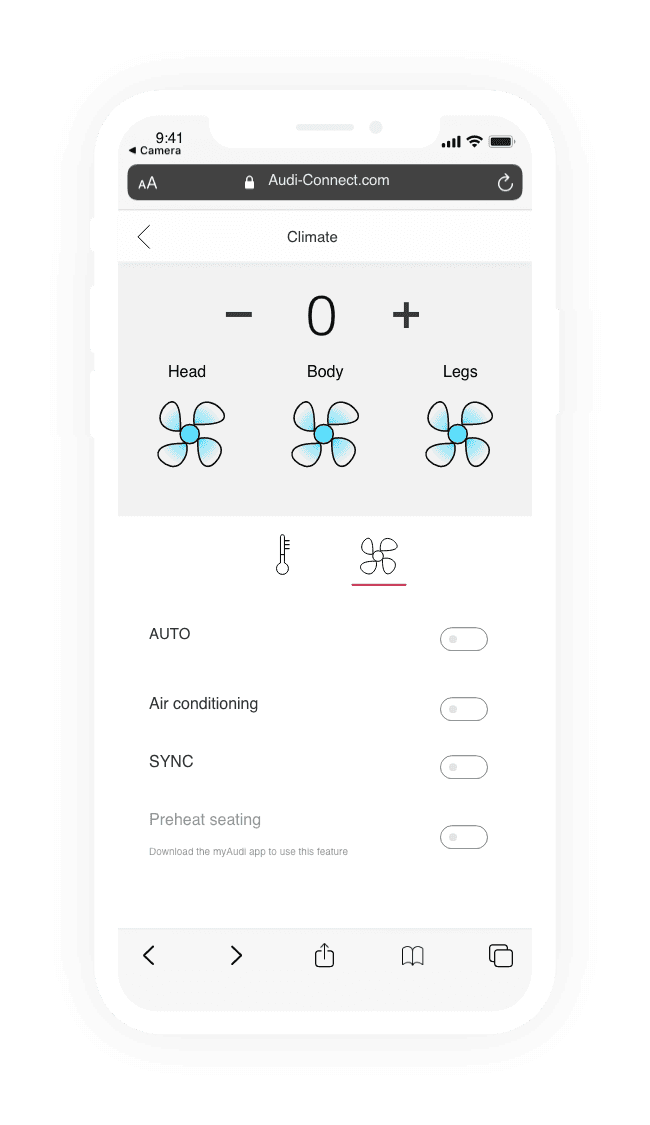
Proud to win 2 place!


Lessons learned
One year later, we discovered that the marketing agency that sponsored the hackathon had developed a route tracking app for the Audi e-tron, the latest all-electric SUV at the time. Our experience at the hackathon allowed us to think boldly and envision the future. In the real world, understanding stakeholder goals and business objectives is essential. While the hackathon environment encouraged us to dream big, the practical implementation of such a solution requires a more comprehensive understanding of market dynamics. Our journey continues, and I will always be pushing the boundaries of innovation.



